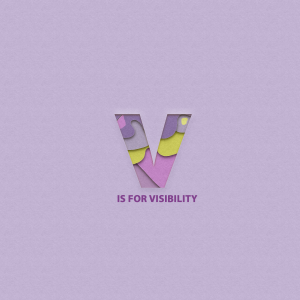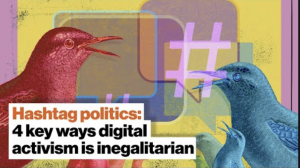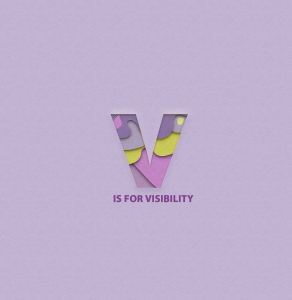V is for Visibility; we ponder who is invisible on internet mediums

Does a poor single mother who works 12 hours a day to provide for her family, takes care of house chores, makes a meal, follows up with her children’s schoolwork, looks after her retired father who has minimum retiring wage or maybe zero, have the time and energy to participate in Twitter debates about employment rights, maternity leaves and compensations, inability to purchase internet data or iPad for her kids’ school requirements post COVID-19 era, … etc.?
Do elderly people living in infirmary houses know how to create social media accounts, know how to navigate through settings, have a sense of the tactics and languages of social media activism, have a nuance of how algorithms works, know how to be engaged in hashtag activism and voice out nursing home abuse? Could they possibly raise the red flags that might ignite a social movement to investigate and hold accountable possible human factors responsible for the skyrocketing number of high COVID-19 cases death rates that were witnessed in Spain’s nursing homes?
Do domestic workers, such as housemaids and drivers, in Dubai and Saudi Arabia have mobile phones and internet access to plan an awareness campaign about severe human rights violations that they go through in some houses? Do they have the tech-savvy tactics to use VPNs so that their messages don’t get deleted due to dictatorship government censorship?
Certainly, these concerns are recognized and addressed in scholarly, academic, and development practitioners settings. Development models are evolving to become more participatory and with endogenous infrastructure. But this evolvement process has to be accelerated through several catalysts that have a political people-centred sense. The breadth of the phrase “access inequality” is wide-ranging and is influenced by societal and power set-ups.
ASETS
Sociologist and assistant professor Jen Schradie argues that an important factor, which requires more light in digital activism dialogues is social class. One of the main arguments around online activism is on its cost efficiency compared to offline activism. Costs of printing out flyers, having few days off from work, cutting out time dedicated to personal commitments, hiring a nanny to babysit the kids, paying for gas for transportation, … etc. are all eliminated in the case of online activism. However, these cost indicators don’t take into account people who are already disadvantaged in an organisational and personal level. It fails to notice people who lack money and time in the first place (Big Think, 2019).
According to Schradie, digital activism is inegalitarian in four central ways that are affected by socio-economic class divisions. These four ways are coined in the word ASETs as follows:
Access
Skills
Empowerment
Time
All those elements are interrelated to each other. One keynote that Schradie makes about empowerment is the general lack of entitlement and powerlessness attitude expressed by some middle to low-class groups. Sometimes they automatically refer to the “other” because they don’t feel entitled enough to participate in political debates. Fear is a preventive factor too. African American working class exerted a sense of fear of “repression for political repression” (Schradie, p.68).
Trending
So, who is visible on the internet? When a trend emerges, it is a trend representing who really? The next time I see a trending hashtag on Twitter, for instance, I shall pause and wonder who is excessively available on the internet? Is this a truly globally trending matter or is it a trending within the realm of a specific audience who happens to exist extensively on the web and have the ASETs to facilitate strong social movements? Keeping those matters in mind has an implication of our assessment to trending phenomena, social movements, and online debates. It is key to highlight that the above brief discussion does not undermine the powerfulness of online activism from the poor and working-class groups; their self-reliance and high capacity proved itself again and again by very successful protests. Nonetheless, there are many Invisibles that are still not integrated into this globalized technological era.

Who is tweeting, who’s not? Source: Big Think
For further exploration upon this matter, check out Schradie’s article The Digital Activism Gap: How Class and Costs Shape Online Collective Action (2018), where she studied in depth the following question: “What is the relationship between social class and participation in online activism across organizations? Does the use of digital activism tools differ? by social class? If so, how?” (p.52). One of her main research findings concludes that the divide in digital activism is deepening, and minimizing this divide will need much more than merely providing digital tools and resources to the poor and working class.
Digital technology creates a treadmill that reproduces inequality.
(Schradie,p.71)
One study case that Schradie investigated is the collective bargaining rights for public employees movements in North Carolina. she discovered that among 60,000 tweets, “only one tweet was from a poor working-class group. Which is statistically zero [emphasis added]” (Schradie, 2019). This is heart-aching.

